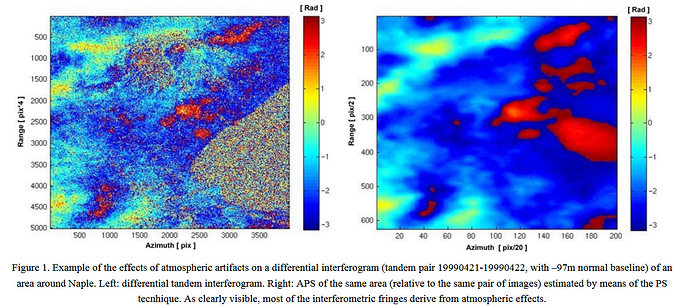Both snow melt and landslides are primarily non-coherent processe, thant means the surfaces change their backscatter characteristics and the pixel information is out of phase. This makes them unsuitable for differential interferometry.
Have a look at mengdahls explanations here: How can we calculate the volume of displaced material with displacement band(displacement_VV)? (this post and two below).
Sometimes, the fringes you see in your interferogram are heavily affected by atmosphere. I cannot tell what is the case in your study because I don’t know the area and the dynamics.
Have a look at this example, where the inteferogram is compared to the atmospheric phase screen (APS), an estimation of the influcence of atmosphere on your data.
What looks like nice fringes on the left turns out to be predominantly caused by atmospheric disturbance (right). It is therefore often a good idea to calculate interferograms of multiple image pairs to see which patterns persist and which are random.
